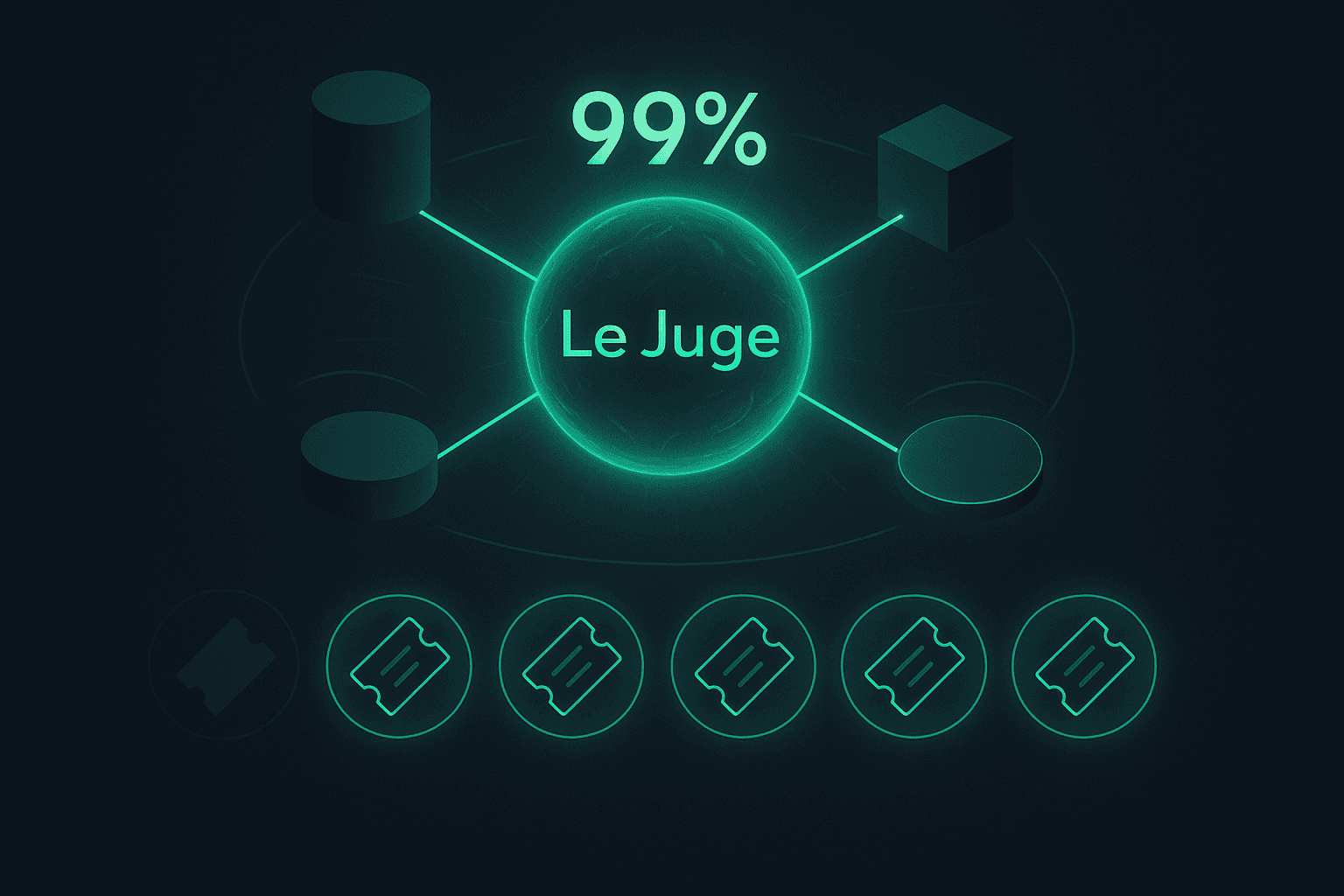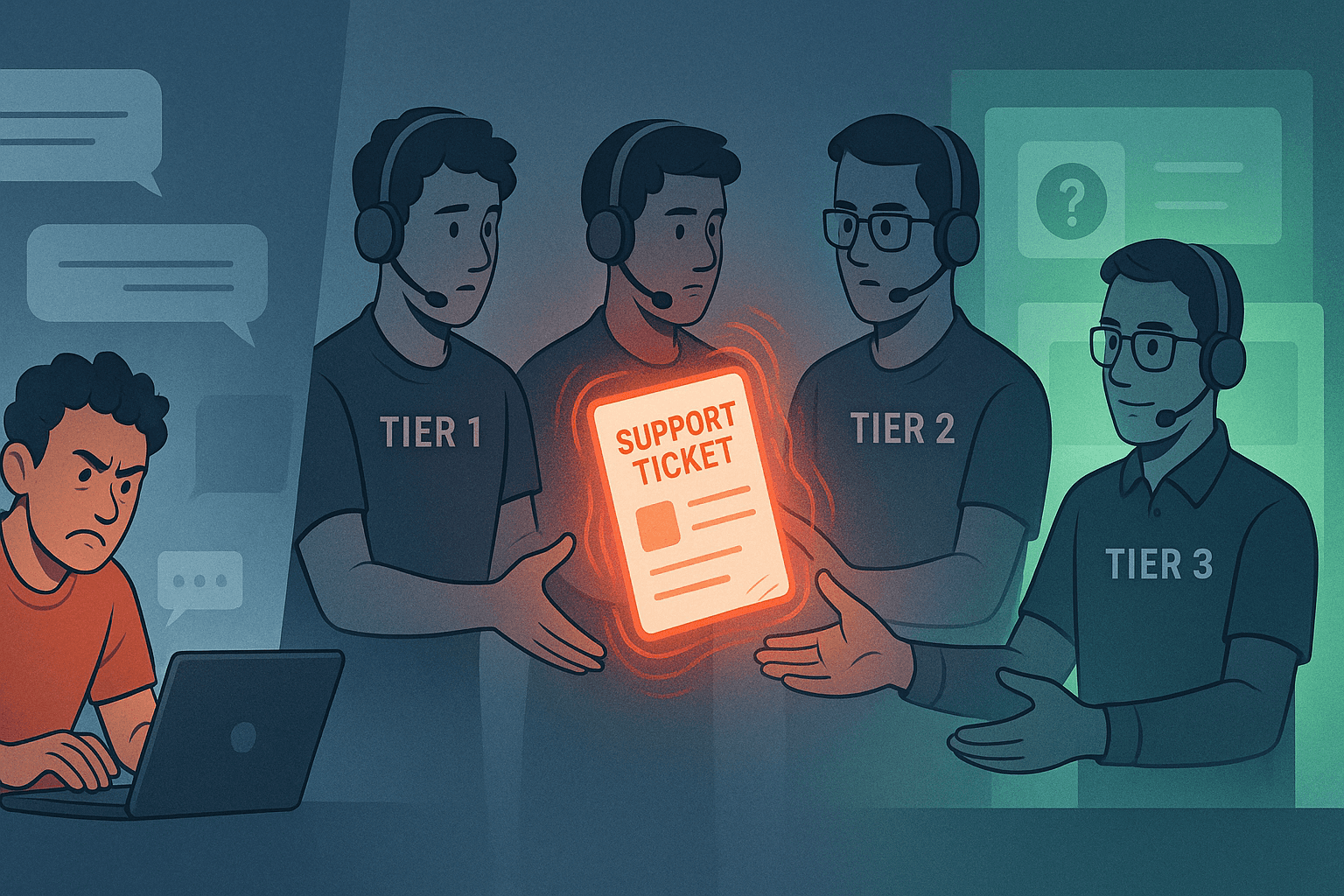How-To
Build a Roadmap After a Pivot
Here’s how we approached our pivot by involving users, turning feedback into a roadmap.
Content
May 19, 2025


A pivot is thrilling. You emerge from the trough of sorrow and dive into a new, hopeful project. But beware of rushing: a pivot isn't just a sudden decision. It's a process that takes time, demands listening and method. One of the most important methods is talking to users to build a relevant, ambitious roadmap.
1. Find Users
First objective: find users to talk to. It doesn't matter who they are, which industry they work in, whether they're young or old, or how tech-savvy they may be. At this stage you're not validating a target market, you're exploring. You might have an intuition about your ICP (ideal customer profile), but keep it flexible.
For each potential customer, identify one or more operational users to onboard.
The goal: help them adopt the tool so they can give you useful, concrete feedback.

2. Gather Feedback
Talking to users is one thing; knowing how to do it is another. Adopt the posture of a helper:
"How could we help you better?"
"What could we save you time or effort on?"
"Do you have frustrations or ideas?"
In short, make them co-creators of the product. At Quivr, we use a simple but effective process: the weekly meeting. Each week the CPO and a dedicated technical owner from Quivr meet with an operational contact on the client side—"the Champion." This ritual builds a real loop of trust and shared learning. No sales pitch, no bullshit—just a product team listening to its users.
3. The Weekly Meeting Agenda
This meeting follows four clear stages:
a. Review Objectives
Revisit the goals set at the last session. Were they met? What worked or didn't? This keeps everyone aligned and measures impact concretely.
b. Problems and Obstacles
Open the floor to the client's daily challenges. The tech owner can investigate bugs on the spot, propose solutions or even deploy a fix immediately—reinforcing the client's trust.
c. Product Feedback
Ask for direct input on product evolution: what they like, what's missing, what annoys them, and any relevant KPIs.
d. Next Steps Define clear actions before the next meeting. These may be simple product tasks or a dedicated tech session for deeper issues. Consistent rhythm, shared objectives and constant alignment on priorities are key.
4. Consolidate Feedback
Collecting feedback is great, but you must keep your promises. At Quivr we're fortunate to have a talented tech team, but prioritization remains crucial. Many client requests deserve to be challenged:
Do they really need this feature?
Could the problem be solved more simply?
Sometimes you must dig deeper, rephrase needs, or even say no, to build a coherent, truly useful product. For example, when a client recently asked for a translation feature already available in Zendesk, we recommended the existing solution so we could focus on higher-value work.
Once a need is validated, you balance:
Value delivered to the client
This client's strategic potential
Number of users affected
Technical complexity of the feature
Alignment with our product vision
5. Building the Roadmap
With clarified, prioritized needs, it's time to construct the roadmap : a true team effort. Every week the CPO meets with Stan, our CEO/CTO, to turn field feedback into a clear, realistic plan for the tech team. Together they challenge ideas, assess technical implications, break down projects and estimate effort. The goal: ensure every commitment is doable, maintainable and aligned with our vision.
We also involve Brian, our CSO, who brings a macro perspective: market signals, competitive dynamics, strategic opportunities. This helps us prioritize not only what helps today, but also what will help tomorrow. And of course we listen to the engineers. Their technical insights, alerts and optimization ideas are invaluable.

6. Roadmap Timing and Cadence
Building a roadmap after a pivot means thinking at two speeds:
Short-term: deliver incremental value to clients every week
Long-term: develop breakthrough features, like our ticket auto-resolution.
We structure our roadmap as:
Long-term initiatives
Short-term sub-projects that deliver quick wins
Quarterly milestones, each tied to clear objectives (e.g. number of answers generated by Quivr, number of tickets auto-resolved, etc.)
This collective, rigorous process yields an ambitious yet realistic, and above all living, roadmap that can adapt as signals shift.
Similar Blogs
How-To
Build a Roadmap After a Pivot
Here’s how we approached our pivot by involving users, turning feedback into a roadmap.
May 19, 2025

A pivot is thrilling. You emerge from the trough of sorrow and dive into a new, hopeful project. But beware of rushing: a pivot isn't just a sudden decision. It's a process that takes time, demands listening and method. One of the most important methods is talking to users to build a relevant, ambitious roadmap.
1. Find Users
First objective: find users to talk to. It doesn't matter who they are, which industry they work in, whether they're young or old, or how tech-savvy they may be. At this stage you're not validating a target market, you're exploring. You might have an intuition about your ICP (ideal customer profile), but keep it flexible.
For each potential customer, identify one or more operational users to onboard.
The goal: help them adopt the tool so they can give you useful, concrete feedback.

2. Gather Feedback
Talking to users is one thing; knowing how to do it is another. Adopt the posture of a helper:
"How could we help you better?"
"What could we save you time or effort on?"
"Do you have frustrations or ideas?"
In short, make them co-creators of the product. At Quivr, we use a simple but effective process: the weekly meeting. Each week the CPO and a dedicated technical owner from Quivr meet with an operational contact on the client side—"the Champion." This ritual builds a real loop of trust and shared learning. No sales pitch, no bullshit—just a product team listening to its users.
3. The Weekly Meeting Agenda
This meeting follows four clear stages:
a. Review Objectives
Revisit the goals set at the last session. Were they met? What worked or didn't? This keeps everyone aligned and measures impact concretely.
b. Problems and Obstacles
Open the floor to the client's daily challenges. The tech owner can investigate bugs on the spot, propose solutions or even deploy a fix immediately—reinforcing the client's trust.
c. Product Feedback
Ask for direct input on product evolution: what they like, what's missing, what annoys them, and any relevant KPIs.
d. Next Steps Define clear actions before the next meeting. These may be simple product tasks or a dedicated tech session for deeper issues. Consistent rhythm, shared objectives and constant alignment on priorities are key.
4. Consolidate Feedback
Collecting feedback is great, but you must keep your promises. At Quivr we're fortunate to have a talented tech team, but prioritization remains crucial. Many client requests deserve to be challenged:
Do they really need this feature?
Could the problem be solved more simply?
Sometimes you must dig deeper, rephrase needs, or even say no, to build a coherent, truly useful product. For example, when a client recently asked for a translation feature already available in Zendesk, we recommended the existing solution so we could focus on higher-value work.
Once a need is validated, you balance:
Value delivered to the client
This client's strategic potential
Number of users affected
Technical complexity of the feature
Alignment with our product vision
5. Building the Roadmap
With clarified, prioritized needs, it's time to construct the roadmap : a true team effort. Every week the CPO meets with Stan, our CEO/CTO, to turn field feedback into a clear, realistic plan for the tech team. Together they challenge ideas, assess technical implications, break down projects and estimate effort. The goal: ensure every commitment is doable, maintainable and aligned with our vision.
We also involve Brian, our CSO, who brings a macro perspective: market signals, competitive dynamics, strategic opportunities. This helps us prioritize not only what helps today, but also what will help tomorrow. And of course we listen to the engineers. Their technical insights, alerts and optimization ideas are invaluable.

6. Roadmap Timing and Cadence
Building a roadmap after a pivot means thinking at two speeds:
Short-term: deliver incremental value to clients every week
Long-term: develop breakthrough features, like our ticket auto-resolution.
We structure our roadmap as:
Long-term initiatives
Short-term sub-projects that deliver quick wins
Quarterly milestones, each tied to clear objectives (e.g. number of answers generated by Quivr, number of tickets auto-resolved, etc.)
This collective, rigorous process yields an ambitious yet realistic, and above all living, roadmap that can adapt as signals shift.




